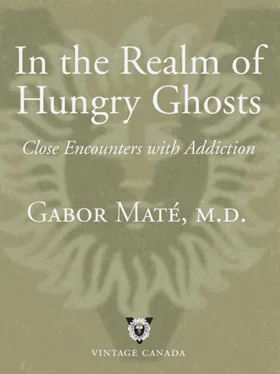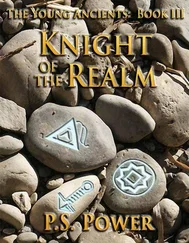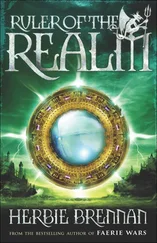Note, too, that neither the textbook definitions of drug addiction nor the broader view we’re taking here includes the concepts of physical dependence or tolerance as criteria for addiction. Tolerance is an instance of “give an inch, take a mile.” That is, the addict needs to use more and more of the same substance or engage in more and more of the same behaviour, to get the same rewarding effects. Although tolerance is a common effect of many addictions, a person does not need to have developed a tolerance to be addicted. And then there’s physical dependence. As defined in medical terms, physical dependence is manifested when a person stops taking a substance and, due to changes in the brain and body, she experiences withdrawal symptoms. Those temporary, drug-induced changes form the basis of physical dependence. Although a feature of drug addiction, a person’s physical dependence on a substance does not necessarily imply that he is addicted to it.
The withdrawal syndrome is different for each class of drug—in the case of opiates such as morphine or heroin it includes nausea, diarrhea, sweats, aches and pains and weakness, as well as severe anxiety, agitation and depressed mood. But you don’t have to be addicted to experience withdrawal—you just have to have been taking a medication for an extended period of time. 3As many people have discovered to their chagrin, with abrupt cessation it’s quite possible to suffer highly unpleasant withdrawal symptoms from drugs that are not addictive: the antidepressants paroxetine (Paxil) and venlafaxine (Effexor) are but two examples. Withdrawal does not mean you were addicted; for addiction, there also needs to be craving and relapse.
In fact, in the case of narcotics, it turns out that the addictive, “feel good” effect of these drugs seems to act in a different part of the brain than the effects that lead to physical dependence. When morphine is infused only into the “reward” circuits of a rat’s brain, addiction-like behaviour results, but there’s no physical dependence and no withdrawal. 4
“Dependence” can also be understood as a powerful attachment to harmful substances or behaviours, and this definition gives us a clearer picture of addiction. The addict comes to depend on the substance or behaviour in order to make himself feel momentarily calmer or more excited or less dissatisfied with his life. That’s the meaning I’ll be referring to unless I am specifically describing physical dependence, the narrower medical phenomenon. Father Sam Portaro, author and former Episcopalian Chaplain to the University of Chicago, said it admirably well in a recent lecture: “The heart of addiction is dependency, excessive dependency, unhealthy dependency—unhealthy in the sense of unwhole, dependency that disintegrates and destroys.” 5
CHAPTER 12

From Vietnam to “Rat Park”: Do Drugs Cause Addiction?
In the cloudy swirl of misleading ideas surrounding public discussion of addiction, there’s one that stands out: the misconception that drug taking by itself will lead to addiction—in other words, that the cause of addiction resides in the power of the drug over the human brain. It is one of the bedrock fables sustaining the so-called “War on Drugs.” It also obscures the existence of a basic addiction process of which drugs are only one possible object, among many. Compulsive gambling, for example, is widely considered to be a form of addiction without anyone arguing that it’s caused by a deck of cards.
The notion that addiction is drug-induced is often reinforced. A celebrity, for instance, might announce when checking himself into a rehab centre, that he became hooked on narcotics after they were prescribed for, say, a back injury. “Making a career out of pratfalls eventually took a toll on Jerry Lewis,” reported the Associated Press in April 2005:
The entertainer said Sunday on ABC’s This Week that he spent thirty-seven years in constant pain as a result of his trademark physical comedy, which led to an addiction to pills. “In 1965 they gave me one Percodan that took me through the day. And by ’78, I was taking 13 a day, 15 a day. The addiction is devastating, because you’re not even clear anymore why you’re taking it. I had already discussed a variety of options, one of which was to kill myself,” he said.
I also took Percodan at one time, for a few days. After a wisdom-tooth extraction about thirty years ago I developed a condition called “dry socket syndrome,” which I’d never heard about before and never wish to hear of again. The pain in my jaw was excruciating. I was swallowing Percodan in higher than recommended doses and more frequently than prescribed. Finally the third dental surgeon I consulted diagnosed the problem and cleaned and packed the infected socket. The pain then abated, and I’ve never taken Percodan or any other narcotic since.
Clearly, if drugs by themselves could cause addiction, we would not be safe offering narcotics to anyone. Medical evidence has repeatedly shown that opioids prescribed for cancer pain, even for long periods of time, do not lead to addiction except in a minority of susceptible people. 1
During my years working on a palliative care ward I sometimes treated terminally ill cancer patients with extraordinarily high doses of narcotics—doses that my hardcore addict clients could only dream of. If the pain was alleviated by other means—for example, when a patient was successfully given a nerve block for bone pain due to malignant deposits in the spine—the morphine could be rapidly discontinued. Yet if anyone had reason to seek oblivion through narcotic addiction, it would have been these terminally ill human beings.
An article in the Canadian Journal of Medicine in 2006 reviewed international research covering over six thousand people who had received narcotics for chronic pain that was not cancerous in origin. There was no significant risk of addiction, a finding common to all studies that examine the relationship between addiction and the use of narcotics for pain relief. 2“Doubts or concerns about opioid efficacy, toxicity, tolerance, and abuse or addiction should no longer be used to justify withholding opioids,” concluded a large study of patients with chronic pain due to rheumatic disease. 3
We can never understand addiction if we look for its sources exclusively in the actions of chemicals, no matter how powerful they are. “Addiction is a human problem that resides in people, not in the drug or in the drug’s capacity to produce physical effects,” writes Lance Dodes, a psychiatrist at the Harvard Medical School Division on Addictions. 4It is true that some people will become hooked on substances after only a few times of using, with potentially tragic consequences, but to understand why, we have to know what about those individuals makes them vulnerable to addiction. Mere exposure to a stimulant or narcotic or to any other mood-altering chemical does not make a person susceptible. If she becomes an addict, it’s because she’s already at risk.
Heroin is considered to be a highly addictive drug—and it is, but only for a small minority of people, as the following example illustrates. It’s well known that many American soldiers serving in the Vietnam War in the late 1960s and early 1970s were regular users. Along with heroin, most of these soldier addicts also used barbiturates or amphetamines or both. According to a study published in the Archives of General Psychiatry in 1975, 20 per cent of the returning enlisted men met the criteria for the diagnosis of addiction while they were in Southeast Asia, whereas before they were shipped overseas fewer than 1 per cent had been opiate addicts. The researchers were astonished to find that “after Vietnam, use of particular drugs and combinations of drugs decreased to near or even below preservice levels.” The remission rate was 95 per cent, “unheard of among narcotics addicts treated in the U.S.” *12
Читать дальше













